The beautiful town of Porto, a UNESCO world heritage site, nestles on the rugged slopes of the Douro River, and is a hotpotch of architectural styles. Its narrow, cobbled streets tumble down the hillside, home to a maze of kaleidoscopic houses. Ramshackle crumbling shells sit despondently beside beautifully restored townhouses decorated in the distinctive blue tiles common in Portugal. Labyrinthine alleys weave across the slopes, a true warren of homes crammed into nooks and crannies. This eclectic city sprawls between the six bridges of the Douro in a chaotic assortment of alleys, stairways, and tiny roads. The haphazard jumble of ancient and modern quickly charms visitors but if you are short on time you will need a plan. So bookmark this post that brims with useful information to help you explore the delightful city of Porto in 48 hours.
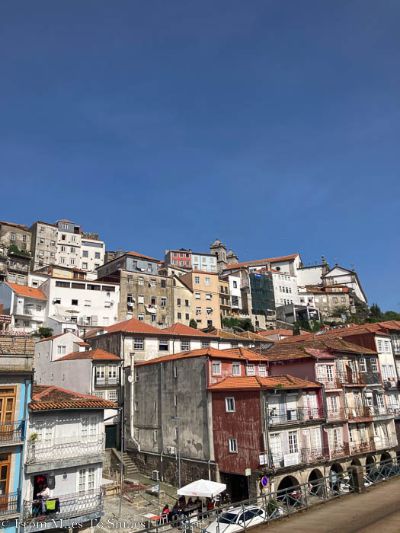
Getting around Porto in 48 hours
The easiest way to get around Porto is with the Hop on Hop off buses. You can buy tickets with Gray Line on the blue bus, City Sightseeing which are the red buses and the local Yellow Bus company. We booked the latter and for €22 we bought a 48-hour ticket valid on the funicular, vintage tram and bus.
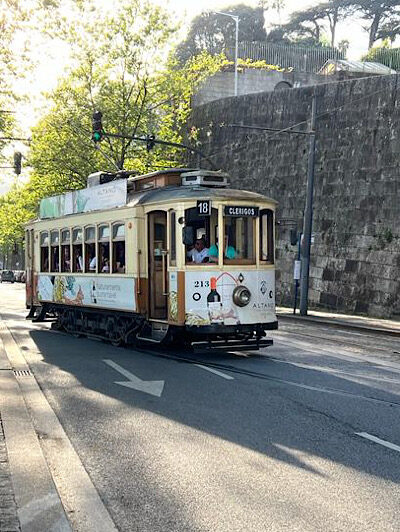
Yellow bus
Yellow bus tours offer two routes. The purple castle route has 20 stops and takes around two hours. It visits the beachside suburb of Foz where you can stroll along the promenade.
The orange route includes 13 stops and takes 90 minutes. This route takes in Gaia on the opposite bank and the historical old town. Book your Yellow Bus tickets here.
If however, you are as short on money as you are on time, you may wish to consider some of the following alternative options.

Metro
There are 81 stops on Porto’s metro and each line has a colour and identification letter. Line E (violet) travels to the city from the airport. Line D (yellow) is the nearest stop to the Ribiero and travels over the Dom Luis bridge into Vila Nova de Gaia. The longest line is line B (red) which runs from FC Porto to the seaside. Trains operate daily from 6am to 1am and look more like modern trams than a metro.
To ride the metro network, purchase an Andante Card. If you only need to make a few trips you can opt for the top up Andante Blue Card (€0.60). If however, you plan to travel on the metro frequently, the Andante Tour Card may be a better option. A 24-hour card costs €7 and a 72-hour card is €15. You can purchase cards at tourist information offices and metro stations.
Tickets are also valid on buses but not the tram and funicular.
Vintage Tram
The number one vintage tram rumbles along the Douro River between the Ribeira district and Passeio Alegre, a short walk from the beaches of the Foz do Douro. The interior is kitted out with shabby leather seats and antique wood panelling. Oversized windows open to allow a breeze to rustle through the carriage. Note the step up is pretty darn high and there is no accessibility option so this is not a good option for anyone with limited mobility.
You can purchase single tickets (€3.50/6 one-way/return) from the driver but if you wish to use other trams in the centre it may be better to buy a two-day unlimited tram pass for €10 (€5 for children). Remember your Yellow Bus company ticket is valid for these trams.
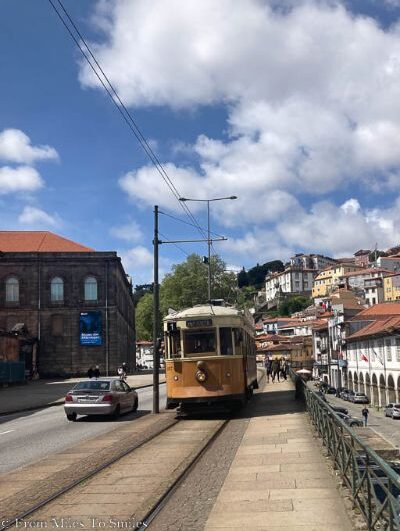
Funicular
The Funicular dos Guindais connects the quayside beneath Dom Luis bridge to Batalha-Guindais station in the upper town. It takes less than 5 minutes to scale the steep cliffside and provides stunning views of Vila Nova de Gaia and its numerous port wine lodges.
It will certainly save your legs and is included in the Yellow Bus bus, funicular and tram tour package but not in the Andante pass however tickets only cost €2.50. A price that is definitely worth paying when you see the climb.
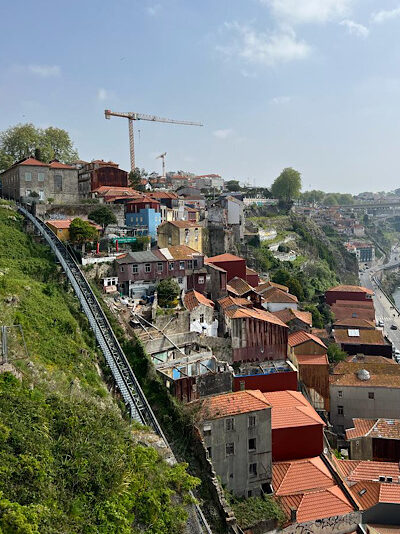
Cable car
A cable car runs between the upper Dom Luis bridge and the quayside in Vila Nova De Gaia and offers sweeping views over the Douro. It costs €6 (€9 return) and operates between 10am and 8pm in summer. Check here for the operating times applicable to your travel dates.
Taxis
Taxis are readily available and cost a few € per mile.
A transfer to the airport will cost you around £20 if you prebook. We booked our transfers in advance and paid £17.39 from Porto to the airport. We also pre-booked our taxi from Porto airport to the city center and paid just £21.29.
Electric scooters
Electric scooters are scattered around over 200 different sites in the city. To hire one, you will need to download the Bird, Hive or Circ app and create an account. You then use the app to find nearby scooters and scan the QR code on the scooter.
Costs vary by operator, but you can expect to pay around $10 an hour.
Bus
The bus reaches more areas than the metro and you will need an Andante card to ride. Find details of routes here.
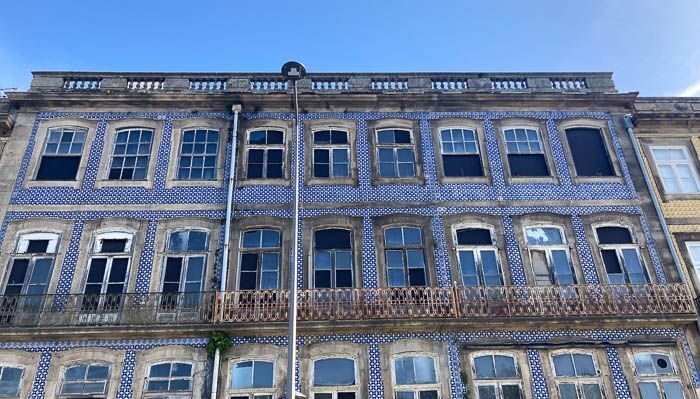
Top sights
The great news is that many of my favourite sights in Porto are FREE. Simply pop on your walking shoes and you can visit this city for next to nothing if you are willing to rack up the steps. I have marked all the sights on the map below for ease. Note, you can also download your very own walking tour on GPSmyCity.
Want to tour Porto in 48 hours for free?
If you want this tour, and many more like it for free, then claim your giveaway of a one year premium membership on GPSmyCity. Membership gives you access to tons of self-guided walking tours and you do not need to be online to follow your tour.
To claim your one-year premium membership, download GPSmyCity app and register. Then go to “More” and “Feedback” and send a message quoting your claim code. Do not dilly dally, as the code only works for one week from today (i.e until the 21st May 2023).
Here is your super cool code.
27831405
Once your premium membership is activated, you will get full access to walking tours for over 1,000 cities worldwide. That is a lot of travel inspiration! But back to Porto….
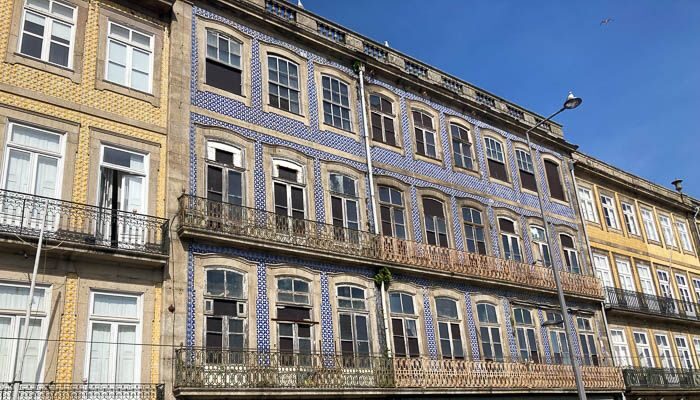
Hunt for Azujelas
The splendid colorful blue tiles commonly found in Portugal are known as azulejos. Churches, homes and other buildings are traditionally decorated with intricate patterns in blue and white tiles. As you roam the city watch out for architectural gems like these.
Sunset from Miradouro das Virtudes
Perched above the Parque Das Virtudes the Miradouro is a popular spot for drinks at sunset. A tiny, cobbled street rammed with bustling bars pulses with activity as hordes flock to watch brilliant sunsets over the river. Visitors can enjoy beers (you can even bring your own!) on the terrace overlooking the river far below or feast on fruity sangrias in one of the throbbing bars nestled into the hillside.
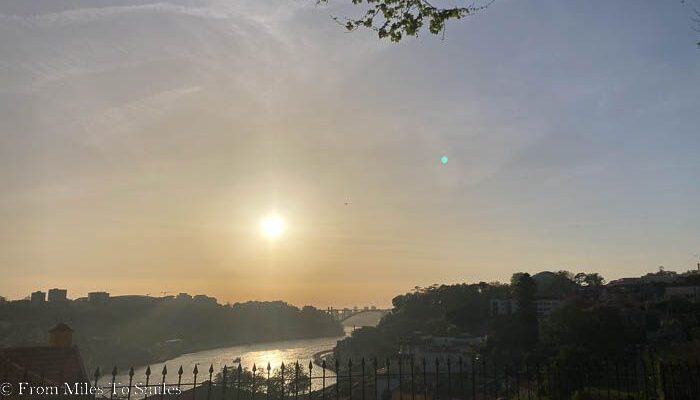
Cathedral
The gothic cathedral of Porto peers haughtily over the city from its hilltop location. The fortress-like Sé dates back to the 12th-century and from its courtyard you can see spectacular sweeping views over the tiled terracotta roofs of Ribeira.
It is free to enter the cathedral but costs €3 to visit the cloister.
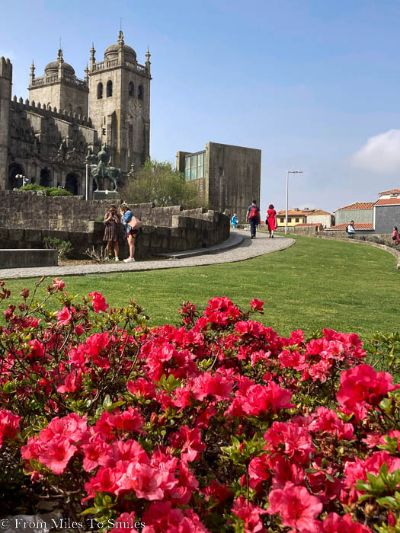
Spectacular bridges
Some of the bridges of Porto are pretty awe inspiring however the following two comprise complex ironwork frameworks and grand arches and are icons of the city.
Dom Luis bridge
The double decker Dom Luis bridge is an incredible work of engineering with two pedestrian walkways. The lower pedestrian bridge connects the Port wine houses of Vila Nova de Gaia with the bustling downtown Ribeira district of Porto whilst the upper walkway connects visitors to the area around the Cathedral and the cable car station.
Both levels were originally built to carry road traffic but nowadays the top carries the Porto Metro trains and the lower level is reserved wholly for pedestrians. It is worth making the crossing on the upper level for stunning views of the quaysides of Gaia and Porto. You can marvel at the scenic hotpotch of colourful tiled houses that litter the shores of the Douro, ramshackle, dilapidated buildings and beautifully restored townhouses.

Dona Maria Pia bridge
Whilst it resembles the neighbouring bridge of Dom Luis, this bridge has only an upper walkway. Here are a few interesting facts about the Dona Maria Pia bridge;
- Gustave Eiffel designed the Dona Maria Pia bridge. You may know he also designed a famous tower in Paris!
- In 1876, when the bridge opened, it held the record for the largest span of any bridge of this type.
- The bridges take their names from a previous Royal Family of Portugal. One for King Luís I, and the other for his wife, Maria Pia of Savoy.
Torres Del Clerigo
The Torres Del Clerigo intersects two roads and has a distinctive shape with a traditional church at one end and the tower at the other. Visitors can pay €8 for the tower and Clerigos Museum or €9 for a guided tour of the tower, church and museum. From the top you can see stunning views over the terracotta tiled roofs of Porto to the countryside beyond.
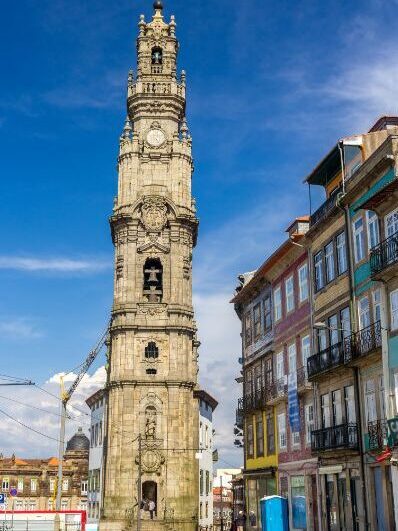
Port tasting in Vila Nova De Gaia
No visit to Porto would be complete without trying at least one glass of Port, a sweet dessert wine that comes in a variety of shades. Port has the highest concentration of alcohol anywhere in the world however so drink with caution!!
The origins of Port date back to the 17th and 18th century when feuds between Britain and France interrupted Britain’s wine imports. Whilst the rich, fertile soil of the terraces of the Douro offered the perfect climate for wine cultivation, unfortunately the wine could not survive the long voyage back to Britain. To overcome this problem, the Portuguese added a small amount of brandy to fortify the wine and prolong its lifespan. Porto soon became a hub for the wine trade and in 1757 the Marques de Pombal took steps to ensure that only wines from this specific region could be named Port.

Head to one of the wine tastings on the banks of the river Douro for an education in its cultivation but to sample the various shades of Port from white to ruby. We booked our wine tasting through Get Your Guide and opted for a wine tasting paired with chocolate but you can also select cheese and wine pairings.
Book your tour here for less than £10 a person.
Jardins Do Palacio Da Cristal
The beautiful gardens of the Palacio Da Cristal perch on a cliffside overlooking the Douro. An ornamental lake sits behind the Superbock arena and as you wander the gardens you can admire the numerous male peacocks vying for the attention of the females who haughtily rebuff their advances.
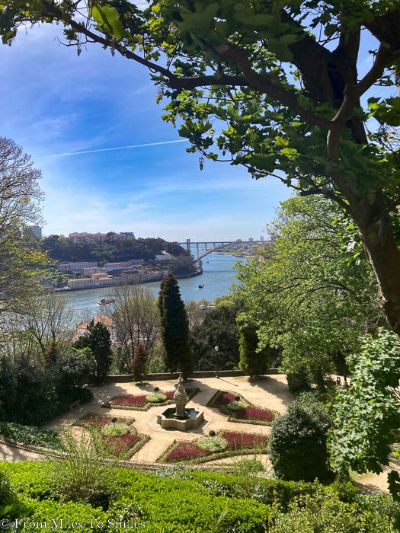
Foz
The beachside suburb of Foz is home to a long promenade that weaves around the coast. Admire the waves that sweep into narrow gullies and rocky coves creating huge swells and thundering spray as you wander along the coastline. To get to Foz either jump on the Yellow Bus or take the vintage tram to the end of the line.
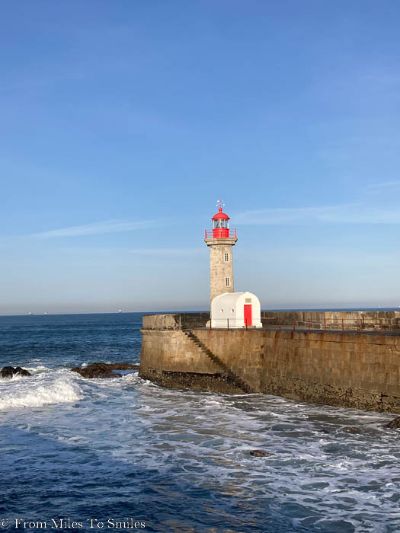
Ribiera
The narrow lanes of the Ribiera are a charming place to wander during any visit to Porto. Narrow alleyways and stairways criss cross cobbled streets where quaint bars, cafes and restaurants hideaway.
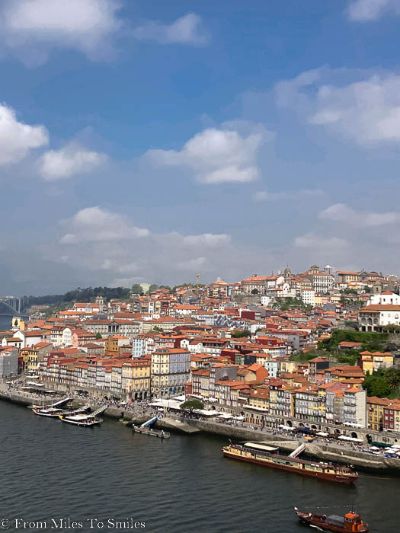
Your recommendations
If you want to visit Porto in 48 the sights above will keep you well and truly busy but what if you plan to stay for longer? Perhaps some of our other readers have visited Porto? If you have any great recommendations that you wish share with us, don’t be shy! Drop them in the comments as we love to hear from you.
 From Miles to Smiles Stylish travel for professionals seeking luxury at affordable prices
From Miles to Smiles Stylish travel for professionals seeking luxury at affordable prices


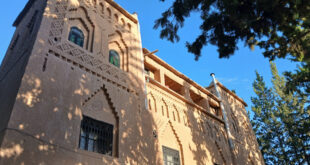
Definitely one on my list, I do like a fortified wine!
Ha ha Simon you might not want to love it quite as much as we did. I wasn’t kidding when I said it was strong! Michala and I were packed off to bed early doors due to the effect!!